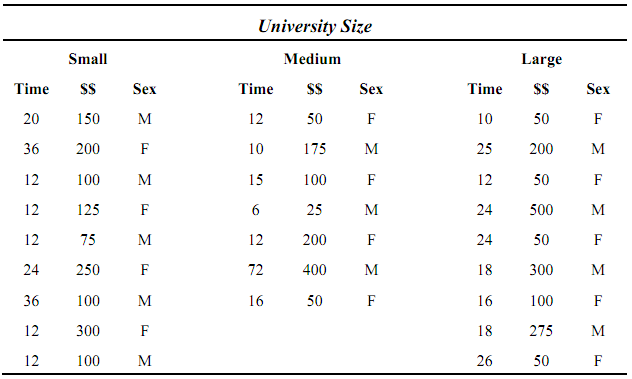Reference no: EM13334058
1) Researchers are interested in the performance of university students on a math achievement test. Many hypotheses were kicked around but ultimately the team felt that math achievement (MATHACH) would be influenced by a number of things including: the student's gender (GENDER), grades in high school (GRADES), motivation (MOTIVATION), general competence (COMPETENCE), and parents' education (combined measure of mother and father's education) (PAREDUC).
Using the "StudentPerf.sav" data set on the Courselink site and/or emailed to you, address the following (Hint: You can provide one introductory explanation and describe variable normality once as you are using the same data for all models!):
(a) Examine the correlations of all variables listed above and summarize the relationships. Based on these correlations, predict which variables will be important and explain your rationale.
(b) Run simultaneous multiple regression to examine predictors of math achievement as listed above. Summarize your results, discuss and explain the findings.
(c) One of the researchers has an "a-ha" moment and suggests that the number of prior math courses might also influence math achievement scores. Control for number of prior math courses (MATHCRS) FIRST and examine the impact on your model. Run hierarchical regression to test this model and provide a summary and discussion of your results. What predicts math achievement in this new model (explain)?
(d) Compare and contrast your results from steps b & c. Explain the differences in your results focusing on how these techniques enter independent variables (IVs) and how the variance accounted for in the dependent variable (DV) is attributed to independent variables (IVs).
(e) Were your original correlation predictions correct? Briefly explain why/why not.
(f) Based on the hierarchical regression results, specify the final regression equation for predicting math achievement scores:
2) We all want a job that will support our lifestyle when we finish our university degree(s). Imagine you are a recent graduate and the proud owner of a newly-minted Ph.D! The job market awaits you but being the careful consumer, you have interviewed 25 universities in three different categories (small, medium, and large) and requested information concerning their hiring practices with regard to gender, amount of time before a pay-raise is given (in months), and the amount of that pay-raise (increase in salary per month). The data are as follows:

1) Analyze whether gender differences exist in the size of pay-raise and whether or not these differences are attributable to the size of the university.
2) If you control for the amount of time before the pay-raise was given, does this change your results?
3) Compare and contrast your findings above...what would you conclude about gender differences in pay-raises at universities of different size?
If you were a woman, where would you take a job (assuming one was offered to you in each size university)?
If you were a man, where would you take a job (assuming one was offered to you in each size university)?
Attachment:- key variables studentperf.rar